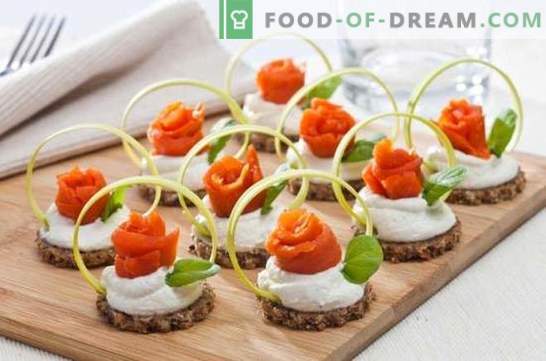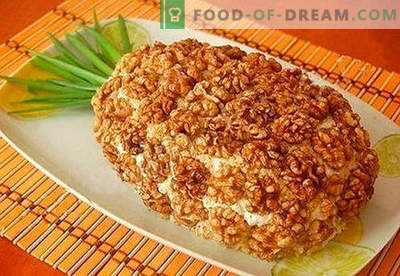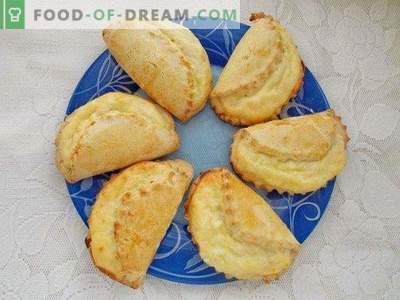
Finger food (from the English “food with your fingers”) is a fashionable culinary trend, the main idea of which is to eat small portions of food. Not only do the owners save money on food, but universal overeating is also prevented. Instead of stacks of dirty dishes, there are a few napkins and wooden sticks. Recent studies highlight the importance of preventing overeating, as New Year's feasts are responsible for 15% of obesity cases each year.

What kind of Christmas finger foods can I cook?
The most well-known variety of finger food is small sandwiches. Salmon, salami, cheese and some vegetables are still popular in classic parties. Black bread with cream cheese and crab salad is not only more satisfying, but also rich in fiber and omega-3. Instead of black bread, you can use toast sliced into four squares. However, for the New Year's table do not serve only sandwiches from typical bread with a slice of ham.
In addition to the “German” sandwiches, dishes from Italian cuisine are common. In addition to pizza and spaghetti, the Italians also love tramezzini, ciabatta and bruschetta, which belong to finger-fudam. Even mozzarella balls, which contain a small piece of basil between two tomatoes, fit the New Year's table.
Tapas are popular in Spain. It consists of small salted peppers, spicy salami, tortilla cubes, ham Serrano, potatoes in a salt crust or stuffed olives.

Sushi also belongs to finger-fudam. Especially rolls wrapped or fried with seaweed will satisfy the guests. Cheese buns, fried banana, shrimp, tofu cubes or exotic skewers with fruit can replace the traditional Olivier or herring under a fur coat.
On New Year's Day, you can also make small dumplings served in tiny bowls, or salads in special spoons. To consume finger foods you need large glasses, espresso cups or tea trays made of glass.
What are some tasty finger foods?
Since finger foods often replace traditional cuisine, desserts should not be absent from the New Year's menu. Important: all meals should be eaten without a plate manually. Therefore, suitable for various pastries: muffins, cookies, donuts or pastries.

Skewers with fruit pieces, bananas with chocolate coating or ice cream with canapes sweeten the holiday without harm to health.
Finger food - healthy and healthy food?
Depending on the season, people have different tastes, but the emphasis is on either healthy or tasty food. In summer, snacks with more vegetables, fruits, cream cheese and herbs are more common. In winter, they prefer harmful and high carbohydrate foods.
Overeating is the main risk of obesity and overweight. Holidays contribute to the accumulation of fat mass, as shown by recent studies.
Finger foods help avoid overeating.
Small dishes digest faster, chew easier and saturate a person in a short time. Fast saturability prevents further food intake. If you give preference to high-protein and fat finger-fudam, the risk of overeating is significantly reduced. If alcohol is taken on New Year's Eve, potential liver malfunctions are warned. Alcohol is known to block the degradation of fatty acids, so they settle on the liver. Reducing the consumption of fatty foods reduces the load on the liver cells.
In winter, canapes are especially popular for holidays. On Christmas and New Year snacks are increasingly replacing the obligatory “fat” raclette or fondue. They can be replaced with a small soup, onion pie or baked potatoes in a mini saucepan.
For Christmas or New Year, spicy cheese, such as Roquefort or Gorgonzola, is served with pickled fruit, meatballs and puff pastry. For such “hearty” dishes, it is best to drink dry red wine or fresh draft beer to emphasize the taste of the food.
Canapes, sushi, cheese and grapes cubes, Mexican tacos, grilled vegetables or small salads will ideally replace junk food.
Fruit cocktails, punch or cold white wine are ideal drinks for finger foods.























